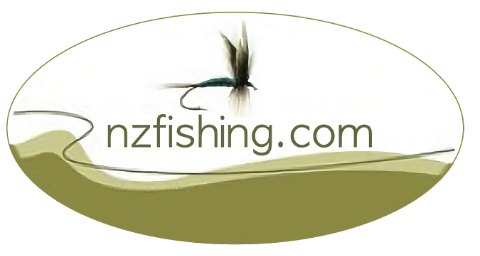| Fish type |
Many thousands of fish are released into Lake Rotoiti each year and when combined with the wild fish population ensures that brown and rainbow trout stocks are very high. Trout in this lake consistently reach very impressive sizes as there is an abundant food source. In 2006 it was reported that one in ten fish caught was over 10lbs. |
| Situation |
Lake Rotoiti lies northeast of Lake Rotorua and is connected by the Ohau channel. |
| Maps |
Access map
|
| Conditions |
Check the Metservice weather forecast.
View the lake level and rainfall. |
| Description |
Lake Rotoiti is a deep lake formed from a volcanic cone that provides excellent fishing to both the shoreline and the boat angler who wishes to target trophy sized fish. It is third-largest lake in the Rotorua area. As there are limited numbers of spawning tributaries, most fish are hatchery-reared but due to the abundant food source in the lake, fish grow rapidly and can reach impressive sizes.
The northern shoreline is bush clad and often has steep cliffs rising directly out of the water. This section is only suited to boat fishing. The southern shore offers a range of angling opportunities to the fly fisherman who wishes to fish from the shoreline.
An algae bloom that affected the lake for a period has not been a major problem over the last few summers and with a diversion wall well under way, the future looks good.
|
| Ohau Channel diversion wall |
The Ohau diversion wall on Lake Rotoiti was designed to stop water and nutrients flowing from Lake Rotorua into the main body of Lake Rotoiti via the Ohau Channel and so significantly improve the lake’s water quality over time. The Environment Bay Of Plenty website has information about the Ohau channel diversion wall. |
| Access |
There is good access to much of the lake. State Highway 33 provides access to the northwestern shoreline, with State Highway 30 providing good access to the southeastern shoreline. As most of the lake can only be fished by boat there are a number of public boat ramps.
As of mid August 2008, Lake Rotoiti's delta boat ramp was back in use with construction of the Ohau Channel Wall completed. See the Lake Rotoiti access map.
|
| Methods |
Throughout the year trolling is the most effective and popular way of fishing. The change of light in morning and evening means fish can be caught by harling or trolling with a shallow lure but throughout most of the day it is important to get the lure down to the fish. To do this anglers use either lead core line or a downrigger. From autumn onward and during the cooler months there is excellent shoreline fishing, particularly where any small stream enters the lake. As the small tributaries are generally on the southern shore where the lake is very shallow it is necessary to use either a floating or very slow sinking line to avoid catching the weed on the bottom. |
| Recommended tackle |
When trolling it is often necessary to get the lure down very deep and so many anglers use 100m or even more of lead core line or use a downrigger that can get lures down 20 metres or more. Those fly fishing from the shore need to use a 6 - 8 weight in a floating or very slow sinking line. |
| Recommended lures |
Nymphs:
Nymphs in the Pheasants Tail, Hare and Copper and Halfback patterns can be successful. When jigging during the winter months any pattern such as a Glo-bug can also work well.
Dry flies:
During warmer weather trout will rise to take any terrestrial insect that is blown on to the water, so any Cicada, Wasp or Blowfly pattern can be successful during the warmer months.
Wet flies / Streamers:
During the day use any pattern that resembles a smelt such as the Grey Ghost, Dorothy, Ginger Mick or Rabbit pattern. At night use a Fuzzy Wuzzy, Craig's Night-time, Scotch Poacher or any dark Marabou pattern. Lumo flies work well particularly on very dark nights.
When jigging, use any smelt pattern.
Spinners:
Toby patterns, Tasmanian Devils and Copper patterns all work well when deep trolling. Different colours work well at different times of the year so it is best to experiment to ensure the best result.
|
| Tributaries |
The major tributary into Lake Rotoiti is the Ohau Channel and the major outflow is via the Kaituna River. Try fishing the mouth of any small stream as it enters the lake,
particularly in winter when large trout are searching for places to spawn. |
| Regulations (1) |
| Applicable to |
Lake Rotoiti except the areas below. |
| Region |
Eastern region regulations |
| Season |
1 Oct-30 Jun |
| Methods |
Artificial fly, spinner |
| Bag limit |
Trout: 8 |
| Size limit (cm) |
350 mm minimum |
| Regulations (2) |
| Applicable to |
Lake Rotoiti winter shoreline area - from Tapuaekura Bay landmark to Hinehopu landmark and extending 200m offshore.
Exception: Within 200m of Ruato Bay stream mouth (see below).
|
| Region |
Eastern region regulations |
| Season |
All year |
| Methods |
Artificial fly, spinner
1 Jul-30 Sept: Fishing for trout from a boat is prohibited. |
| Bag limit |
Trout: 8 |
| Size limit (cm) |
350 mm minimum |
| Regulations (3) |
| Applicable to |
Lake Rotoiti: Within 200m of Ruato Bay stream landmark |
| Region |
Eastern region regulations |
| Season |
All year |
| Methods |
1st Saturday in October - 31 Mar: Artificial fly, spinner
1 July-30 Sept: Fishing for trout from a boat is prohibited. |
| Bag limit |
Trout: 8 |
| Size limit (cm) |
350 mm minimum |


